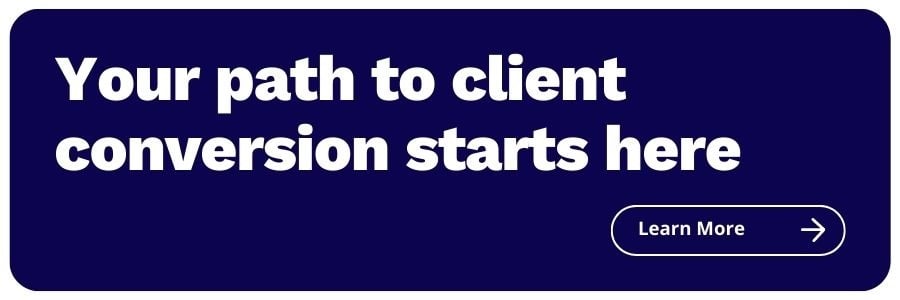3 Behavioral Marketing Hacks to Get More RIA Clients
Share this
When I was a kid, I had a friend named John. John and I were as close as could be—and what unified our friendship was the love of strategy-based video games. We played them all—particularly the 90’s fad at the time, Pokemon. The only problem our friendship endured was that when we faced off in those games, he beat me EVERY. SINGLE. TIME. It wasn’t enough that I couldn’t win—I didn’t know how he did it. Time after time, he’d vanquish me in our battles, and I began to feel inferior.
You see, I didn’t know this at the time because we were just kids, but John was a certifiable genius. One of the smartest people I’ll likely ever meet. I’m nowhere near that level of intelligence, but in my angst, I found a way to level the playing field. I began to start winning… with the use of cheat codes and glitches built into the game. Eventually, being overwhelmed with a mixture of guilt and satisfaction, I showed John my secrets to success. There were no hard feelings, but it certainly made the competition more intense. This is when I first remember learning the value of hacks, which in digital marketing, can make or break careers.
Games are hardwired with tiny glitches and cheat codes, the same way humans are hardwired with instinctive responses. These behavioral “cheat codes” come from a variety of different evolutionary backgrounds, but they are ever-present in us today. In this article, I want to outline 3 behavioral science principles (hacks) that can help you market your RIA - not to cheat folks into signing up with you, but rather to help them better understand your value and importance. When used correctly (and honestly), they can help you break through the noise and create lasting client relationships.
1. The Reciprocity Principle
I use the term ‘hack’ above to bridge the gap between how to cheat a video game and how to hack the human brain, but essentially these are hardwired human behaviors. You can tap into these to help convey a message better, frame a question better, or genuinely drive customer action. All of these hacks have the same goal, which is to drive your prospective clients to take action and meet with you. Behavioral scientists refer to these “hacks” as principles (they actually despise the term ‘hack’), and the first one that stood out to me that might be useful for financial advisors was the reciprocity principle.
The reciprocity principle, at its core, is the fact that when you do something for someone, they’re hard-wired to want to pay you back. For instance, my wife and I have 6 chickens in a nice coop in our backyard. Naturally, we are drowning in rich, farm-fresh eggs, so we take cartons over to our neighbors. Two of my neighbors insist on bringing us homemade bread now when we do this. They appreciate the gift of our fresh eggs with no strings attached, so they are compelled to reciprocate. That’s a pretty basic example.
Okay, chickens and bread are one thing, but let's have more of a business example. One of my favorite behavioral marketers, Nancy Harhut, has an entire chapter on reciprocity in her award-winning book titled: Using Behavioral Science in Marketing. One example Nancy shared is when she worked at a marketing agency that was employed by a financial services company. The goal was to win back financial advisors who had stopped selling their products. Winning back customers who’ve parted ways with you can be extremely difficult, so they employed the reciprocity principle in their campaign. But instead of sending these financial advisors a coffee mug, pen, or T-shirt, they sent something more personal. The team sent each advisor a framed New Yorker Magazine cartoon, loosely pertaining to selling retirement products, with the advisor’s name in it.
“This gift was different, it was relevant, and it was personal. Can’t you just imagine the financial advisors clearing a spot on their office wall in order to display it?” (Harhut, 2022)
This campaign went on to help generate millions in sales that wouldn’t have otherwise happened. But you don’t have to spend gratuitous amounts of money on custom swag to activate reciprocity in prospective clients for your firm. Some examples of this in RIA-specific marketing campaigns could be:
- Sending them a holiday, work anniversary, or birthday card. People tend to react positively when you notice dates that are important to them.
- Send a short, personal video to their inbox using Loom or Vidyard. Make sure they’ll know you took the time to reach out to them directly. In the video, give them valuable advice or quick tips. No strings attached.
- Send weekly tips, market reports, or useful articles to your prospective clients. They’ll appreciate you keeping them informed with unbiased information.
My mortgage broker sends me a monthly report on how valuable my home is in the current market. Needless to say, I’ve used them for two separate purchases, and it cost them almost nothing to stay top-of-mind with those emails. Reciprocity is more effective the more personal you make it, but the principle reigns supreme. When you offer something of value with no strings attached, folks will find a way to return the favor.
2. Social Proof
Social proof might be one of the strongest nudges in marketing. We are nudged every single day by social proof, and sometimes we don’t even realize it. Think of a time that a decision became easier for you once you knew that others you trust had already bought-in. The “all the cool kids are doing it” approach, if you will. As a business professional, I’m asked to evaluate new software or services multiple times a day. My inbox is a graveyard of sales professionals that I’ve left on “read.” When I’m looking for a new SEO or heat mapping tool, I turn to my peers and see what the industry-leading solutions are before I check the price and kick the tires. I want to know what other folks in my shoes do, and that helps me make the bulk of my decision.
Here’s a more entertaining example of the sheer power of social proof. In a short-lived hidden camera show called “Would You Fall For That”, actors played a trick on an innocent bystander in an elevator. Everyone else who came and went on the elevator besides this one woman, Nadia, was in on the prank. Everyone who got on the elevator, instead of facing the door once they got on, faced the back of the elevator. Nadia began facing the front of the elevator, but as the ride went on, she slowly turned to face the back like everyone else. This illustrates that social proof can not only make us more sure of our decisions, but cause anxiety, uncertainty, and stress when we stray away from the popular decision. You just have to watch it:
In his book, Influence: The Psychology of Persuasion, Robert Cialdini describes social proof as:
“Important means people use to decide what to believe or how to act in a situation is to example what others are believing or doing there” (Cialdini, 2021)
Like any behavioral principle, this can be used in the context of starting or growing your RIA. Here are some examples of how you could use social proof to influence your prospective clients to engage in your services that are a little less disingenuous than tricking them (like the elevator prank):
- Include testimonials from your happiest clients. If you’re serving a specific niche, this can be extremely powerful. If you specialize in financial planning for travel nurses, feature quotes from some of your happiest clients, about how you’ve helped them secure their future while having such an unpredictable career. Put them in marketing communications and downloadable content. More prospective clients in this same niche will see others like themselves succeeding with your services. (Psst…be sure to follow proper disclosure requirements!)
- Create a short video case study from one of your longer-term client relationships. This can be hard if you’re just starting out, but prospective clients will appreciate seeing someone like them reach success, not to mention familiarizing themselves with how it happens
This might be one of the easiest principles to start using today, but it’ll require creativity to break through the noise and reach your target audience.
3. Overcoming Temporal Discounting
I recently read about this psychological principle and immediately knew that financial advisors would relate. Temporal discounting is when folks don’t value something in the moment because the gain of the value is too far in the future. A bit like…setting yourself up for financial success?
“Behavioral scientists have found that people can be very present focused, with a preference for instant gratification. If given a choice, your customers will likely choose sooner, albeit smaller rewards over larger but later ones.” (Harhut, 2022)
How can this not apply to financial planning? We surmise that it’s more prevalent in the younger generations than in older ones, which is why serving millennial or Gen Z clients can be more profitable over the long run for financial advisors. But getting millennial clients might be more difficult when they hardly think about retirement.
All too often, advisors just like you come upon the perfect client that fits their niche and has the resources to start planning, they just don’t put enough emphasis on investing in their future. It might frustrate you when this happens, but just know it’s a normal behavioral trait. They’d rather have that extra padding in their paycheck today than be fully matched in their employer’s 401k.
Nancy Harhut also covers temporal discounting in her book. It turns out that studies have shown people see their future selves as strangers. In a Stanford University study, brain activity was higher among groups when they were asked to use words to describe their current selves. When they were asked to use words to describe their future selves or a stranger, brain activity decreased. Essentially, we don’t know our future selves as well, which is why brain activity decreased. And neither do your RIA’s prospective clients.
Nancy goes on to suggest that if we can make it easy to bridge the gap between our prospective client’s current and future selves, we’ll have a much better chance of getting them to take action. One example she used, was getting folks to become fully matched in their employer’s 401k program. The messaging of the campaign asked the employees to envision themselves now and envision all the financial commitments they have (Mortgage, car payment, subscriptions) to keep up a certain lifestyle. The hook became “Do you want retirement to change that?” They built a strong bridge between the employee’s present and future self and made it real by incorporating loss aversion, another effective cognitive bias.
Here are some examples of how you can overcome temporal discounting with your prospective clients:
- Run a budget with them in an early-stage meeting. Show them how much they need to invest to cover their current monthly expenses in the future. I’m sure you, the advisor, are already great at this, but keep in mind that while you’re doing it you are building that bridge between their current and future selves. Simply telling them to “imagine” what their future looks like can reinforce this bridge.
- Harness the power of regret. If you’re financial planning niche is people with homesteads or hobby farms, have the prospective client envision having to sell their farm and all that hard work. Regret can work in powerful ways, but if you build a bridge using it, you’re likely to help your prospective clients see that you really want to help.
- Create a targeted Facebook ad campaign. For example, if you’re working with young families, reinforce that their lives can change in an instant, which is why they should plan for the future so they don’t have to give up what they have today (loss aversion)

About Sam McCue
Sam McCue is XYPN's Director of Sales & Marketing Operations. He specializes in all things SEO, marketing strategy, and automation.
Share this
- Running Your RIA Efficiently: Outsourcing Bookkeeping with XYPN Books
- Road to Launch with XYPN Member Alan Skillern, CFP®, MBA
- Coaching for Better Time Management: Prioritizing Organic Growth in Your Daily Routine
- Boost Your Financial Advisory Practice: SEO Strategies and CRM Optimization for Sales Success
- Advisor Blog (693)
- Financial Advisors (221)
- Growing an RIA (99)
- Digital Marketing (87)
- Marketing (84)
- Community (81)
- Start an RIA (76)
- Business Development (72)
- Coaching (72)
- Running an RIA (70)
- Compliance (69)
- Client Acquisition (65)
- Technology (64)
- XYPN LIVE (59)
- Entrepreneurship (57)
- Sales (49)
- Practice Management (44)
- Client Engagement (41)
- Bookkeeping (38)
- XYPN Books (38)
- Investment Management (37)
- Fee-only advisor (36)
- Lifestyle, Family, & Personal Finance (31)
- Employee Engagement (30)
- Client Services (25)
- Financial Education & Resources (25)
- Journey Makers (21)
- Market Trends (21)
- Process (14)
- Niche (11)
- SEO (9)
- Scaling an RIA (9)
- Career Change (8)
- Transitioning Your Business (7)
- Partnership (6)
- Transitioning To Fee-Only (4)
- Social Media (3)
- Transitioning Clients (3)
- Emerald (2)
- Persona (2)
- RIA (2)
- Onboarding (1)
- Sapphire (1)
Subscribe by email
You May Also Like
These Related Stories

Listening To Your Message From A Client’s Perspective - What Would Arlene Say?
Aug 10, 2017
4 min read

Craft a Compelling Value Proposition in 6 Steps (Template Included)
Feb 24, 2022
13 min read





